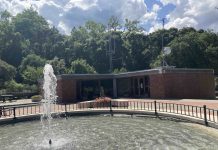A much-discussed course of action to bring housing affordability to our area is to create more housing. And if we are to build more housing, why does it take so long?
While serving on the San Jose City Council’s Ad-Hoc Committee on Building & Planning, I learned firsthand how bureaucracy negatively impacts the timeline on housing production. Further slowing the timelines, builders are often slowed by a shortage in city staffing coupled with less experienced staff members left to untangle multi-jurisdictional requirements for building plan submissions.
Even when the project falls within the legal jurisdiction of the City, projects are held up by demands from multiple departments that may not be communicating as often as they should.
Most developers of significant-sized projects I talked to agree that the process of getting building permits often takes more than one year, and in some cases requires high-priced consultants just to help move the project through all the legal hurdles.
The pandemic has contributed to additional time delays as city staff have switched to remote working conditions, hindering inter-departmental coordination leading to even longer delays.

I spoke to a very experienced San Jose developer, Michael Van Every, CEO of Republic Urban
Properties. When questioned about the City of San Jose’s process, Van Every shared, “It has always been difficult to get final building permits from San Jose. With city employees working remotely, it has nearly doubled the time to get administrative permits like final maps and building permits. Building and fire inspections are also an issue.”
If you are trying to conduct business during this time, you need patience.
Slowing down the process even further, in areas where one would assume dense buildings should be fast-tracked through the approval process, developers are running into all kinds of new hurdles because of the new Vehicle Miles Traveled legislation. Under State Senate Bill 743, which passed in 2018, projects are required to be reviewed under the California Environmental Quality Act (CEQA) to evaluate the transportation impacts of new developments in terms of greenhouse gas emissions, rather than increased traffic congestion.
While this may sound like a great way to tax housing developments that cause an increase in travel on our roads and highways, city planning departments and councils are left to define how to implement this law.
The theory is that projects that are built further away from “downtown” job centers will pay a higher cost to mitigate their impact. However, in reality, even projects that sit directly on rail stations, are being assessed higher fees and requirements since they are not located “downtown.” These costs and delays make the projects unfeasible, delaying the development of housing until the economics can justify the costs.
If local cities are really serious about increasing housing supply, we need to environmentally pre-clear areas we want developed, reduce fees and create multi-jurisdictional review committees.
—Johnny Khamis, former San Jose City Councilor
One such project that was working its way through the approval process is a 200-plus unit high-density housing project on an underutilized VTA parking lot on Blossom Hill Road, a project in my old district. Although the developer was approved by the VTA board, the project was met with changing fee structures, interdepartmental confusion and multi-jurisdictional requirements by the city, Caltrans, and Santa Clara County. Even with expensive consultants to clear the log jams, this project has yet to break ground after two years of untangling bureaucracy.
In some cities such as Fairfield, lawmakers recognized that they needed to do something to streamline these hurdles in order to get developers to build in areas the city wanted developed.
So they actually pre-cleared environmental requirements, like CEQA, in areas where they wanted developers to build and streamlined their permitting process to reduce the time and complexity. As a result, a developer like Melanie Griswald, who conducts business in multiple cities, is able to go through the permitting process in half the time as compared to cities where CEQA pre-clearance is not available.
If local cities are really serious about increasing housing supply, we need to environmentally pre-clear areas we want developed, reduce fees and create multi-jurisdictional review committees to help speed along the process of construction.










